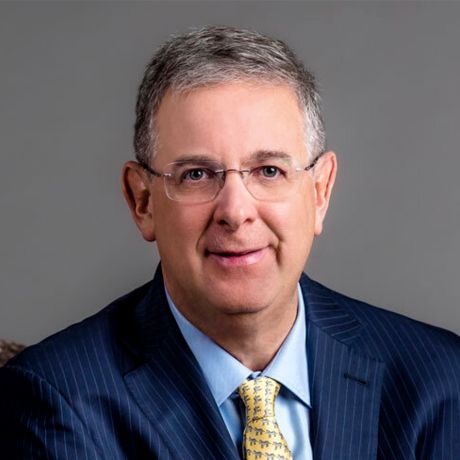
Mark Boggett, CEO of Seraphim Space Manager LLP and manager of the Seraphim Space Investment Trust PLC (LON:SSIT), a portfolio of over 20 world-leading SpaceTech companies.
Space Tech is a new growth sector opportunity for individual investor. Occasionally, 10x returns in 10 years in publicly traded stocks are possible if the cash investment timing is made during a panicked market that has abandoned growth stocks in general and the general tech indices drag down individual winners.
Opportunities happen.
Internet connectivity in the 90’s, e-commerce in the 2000’s, solar energy for the second decade of the 21st Century and now Space Tech.
Mark Boggett is the CEO of Seraphim Space Manager LLP and manager of the Seraphim Space Investment Trust PLC (LON:SSIT), which includes a portfolio of over 20 world-leading SpaceTech companies. In this 2,331 word interview, Mr. Boggett outlines his portfolio of private and public companies with the potential to unlock a fortune for investors in the next 10 years.
“…Last year we founded, launched and listed the Seraphim Space Investment Trust (SSIT) on the London Stock market.
Since then, we’ve gone on to invest $200 million through that trust during the course of the last 12 months, continuing to build out our space-thematic business and diversify the portfolio.
Globally, we’re now the most prolific investor in the space market, with an overall portfolio of nearly 90 companies, and we’re very much at the center of what’s going on globally in this exciting market.
SSIT was really the next stage of development beyond our venture fund, which was solely focused on investing in businesses that were early-stage seed and Series A companies.
However, the sector was developing so quickly that the Investment Trust was created to provide growth capital both for businesses that we have previously invested in in early funding rounds that were now growing into industry-leading companies, as well as new businesses that we identified.
There was a lack of growth capital opportunity for financing these types of companies and we wanted to set up one that was specialist focused on space to enable us to be a leader in the funding rounds but to also bring other non-space-focused investors into these rounds.
My background has always been as a generalist deep-tech investor.
I had a group of partners, which included Michael Jones, who sadly passed away the year before we launched the investment trust. He was the founder of the company Keyhole Corporation which was bought by Google in 2003. Keyhole Corporation became Google Earth, and Michael became the CTO at Google Earth, Google Maps, and Google Local and helped to scale their operations.
He joined me at Seraphim as a partner because he recognized how the space industry was evolving, the opportunities that were going to be presented for earth observation and the opportunities that were developing from this new digital infrastructure that’s being created in the sky.”
The current market turmoil has also impacted Mark Boggett’s fund.
“The revenue streams are coming from two different areas: One is around global security, with defense and intelligence making up significant demand for space businesses.
This has been a particular driver during the last six months, particularly accelerated through the crisis and war in Ukraine, with budgets around defense and intelligence increasing during the course of the year.
These are the types of technologies, solutions and services available from new space companies that make up the SSIT portfolio and are still recording strong growth during the market downturn.
The other side of the revenue stream from these portfolio companies is centered around climate, sustainability and the issues the world is facing on climate-induced weather events.
Similarly, there is a global trend in identifying solutions that can address these big problems, which has led to the growth of impact funds and green funds, as well as strong retail and institutional interest in addressing these big global problems that we’re facing.
Overall, from a portfolio perspective, these companies are continuing to be able to access funding.
However, as a London Stock Market listed fund, we have seen our share price decline significantly, in line with other investment trusts focused on private companies with growth-related strategies.
There has been a general selloff from the start of the year from companies that are pre-profit and particularly technology-related businesses, which we are completely focused on.
Consequently, we have seen limited volume and liquidity in our shares, and as a consequence, we’ve suffered share price declines — today with the value at a significant discount to our net asset value.
There’s uncertainty in the market as to where we are right now. Therefore, in July we put out a trading statement aiming to give confidence to the market that the numbers that we’re going to be putting in mid-October are going to be reflective of a robust position of our portfolio.
Specifically, the trading statement was to demonstrate the strength of the underlying revenue growth and bookings of the underlying portfolio companies.”

Eric M. DeMarco is President and Chief Executive Officer of Kratos Defense & Security Solutions, Inc. (NASDAQ:KTOS)
Eric M. DeMarco, President and Chief Executive Officer of Kratos Defense & Security Solutions, Inc. (NASDAQ:KTOS) is another Space Tech pioneer.
“In the space business, the ground equipment for the vast majority of the legacy satellites that are up there follow geosynchronous orbit — it’s kind of analogous to a 2G cellphone network 20 years ago.
There’s lots and lots of hardware, racks of equipment for the command and control, the telemetry tracking control, etc., to give instructions, etc.
We made a significant investment over the past five years — including we hired executives and technical people from the telecom industry and the wireless industry that worked on 5G networks — and we have converted that satellite hardware ground equipment to software.
It’s called OpenSpace; and it’s open architecture.
I analogize our OpenSpace software to the iPhone iOS system, similar to an operating system.
And now the various modems and other functions and applications, we are also converting those boxes from hardware to software like apps to run on our OpenSpace software.
We have seen incredible market acceptance both with DoD and commercially.
We’ve recently announced two very large program wins, one with Intelsat on the commercial side, and one with BlueHalo and a military program called SCAR, on the national security side.
We’ve just been informed that we have won a another one; it has not been publicly announced yet.
And we have several more that we’re working on that we hope to be successful on by the end of the year.”

John R. Scannell, Chairman and CEO of Moog Inc. (MOG.A)
Another space tech exec John R. Scannell, Chairman and CEO of Moog Inc. (NYSE:MOG.A), has similarly rosy view of this new investment sector:
“The space business is going very well.
Most of our space business is in some way U.S. government funded and is defense related.
The formation of the Space Force a couple of years ago will have an impact.
The way I describe it is that historically to win a battle, you always sought out the high ground, whether it was at the top of the hill, or the top of the mountain, or in the air in an airplane.
Now space is the high ground, and so there’s a lot of investment going into space opportunities.
We’re seeing some nice business there.”
The skill to provide space tech is a rare corporate attribute.
“…That just gives you a sense of “performance really matters”; it’s in highly critical applications, but it’s also in military jets where we control the surfaces on the wings and the tail that moves the jet.
On commercial airplanes, we do flight-critical systems.
In other words, if our systems fail, it’s a very bad day. It’s this idea of performance really matters that translates to the idea that the cost of failure is far higher than the cost of acquisition.
That cost of failure could be life or it could be just very expensive…the Mars example is interesting.
I’ll give you my story on that from a few years ago when we had some products on the Mars lander.
The way I describe it is, it was a 10-year development program, and it was a 10-month flight to Mars.
And the Moog products had to work for about 10 seconds, but they had to work the moment that vehicle was landing on Mars.”

Marc Bell, Co-Founder, Chairman, and Chief Executive Officer of Terran Orbital Corp (LLAP)
Marc Bell is a real estate developer turned space tech exec as the Co-Founder, Chairman, and Chief Executive Officer of Terran Orbital Corp., (NYSE:LLAP), a leading manufacturer of satellites primarily serving the United States and Allied aerospace and defense industries.
“We’ve carved out a niche with satellites 500 kilograms and under and we’re also the folks that invented the CubeSat, so we started the SmallSat revolution over a decade ago.
All the SmallSats you see today were based on our initial technology…
What used to cost $1 billion, we can now do for $10 million. What used to take a decade to build, we can now do in months.
We have shown the world how you can do big things in a very small package.
At the end of the day, it’s cheaper to get there from a ride perspective.
The downside is you have to replenish them every five years. The plus side is the cost is a fraction.
Even if you have to replace the satellite every five years, it’s still phenomenally cheaper than building one geosynchronous satellite, and you continue to refresh your technology.
We can design, build, and launch a satellite while the current model iPhone is still being made.
And geosynchronous satellites, you know these things could be the size of houses and they take a decade to build and launch.”
Get the complete picture from all of these Space Tech execs by reading their complete interviews, only in the Wall Street Transcript.
Chart Industries, Inc. (GTLS) Represents an Opportunity to Invest in Natural Gas in 2014
March 06, 2014
Wood Pellets are the New High Dividend Opportunity: Enviva is the Way to Invest
January 30, 2023
Piper Jaffray Senior Research Analyst Advises Investors on the Blockchain Tech Opportunity
May 01, 2019
Tocqueville Opportunity Fund (MUTF:TOPPX) Portfolio Manager Urges "What the Heck, Keep Buying Tech"
July 30, 2021
Jay Sugarman Says His New Publicly Traded Real Estate Company SAFE is the Perfect Investment
April 27, 2018